The rib cage
We are no longer building saddle trees, but we have two videos about how Western saddles fit horses available on our westernsaddlefit.com website.
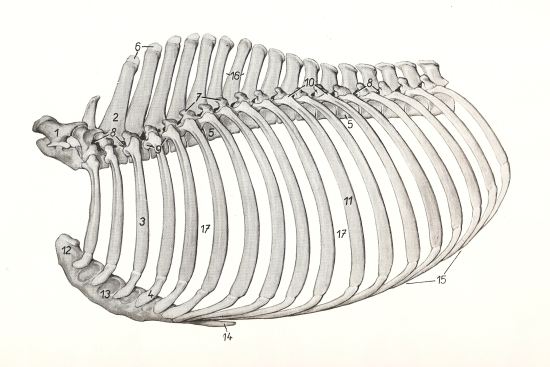 The only section of the skeleton we haven't talked about in previous posts in this series is the rib cage, so here it is. Considering that the rib cage supports the majority (but not all) of a western saddle, how it is shaped and how it moves is very important for how a saddle fits and works on the horse. It is important to know that the horse has 18 ribs, which is a lot compared to other domestic animals. Pigs have 14 to 15. Cows, sheep, goats, cats and dogs all have 13. People only have 12. The fact that horses have that long a rib cage to support a saddle is one of the reasons I think they really were designed to be ridden!
The only section of the skeleton we haven't talked about in previous posts in this series is the rib cage, so here it is. Considering that the rib cage supports the majority (but not all) of a western saddle, how it is shaped and how it moves is very important for how a saddle fits and works on the horse. It is important to know that the horse has 18 ribs, which is a lot compared to other domestic animals. Pigs have 14 to 15. Cows, sheep, goats, cats and dogs all have 13. People only have 12. The fact that horses have that long a rib cage to support a saddle is one of the reasons I think they really were designed to be ridden!
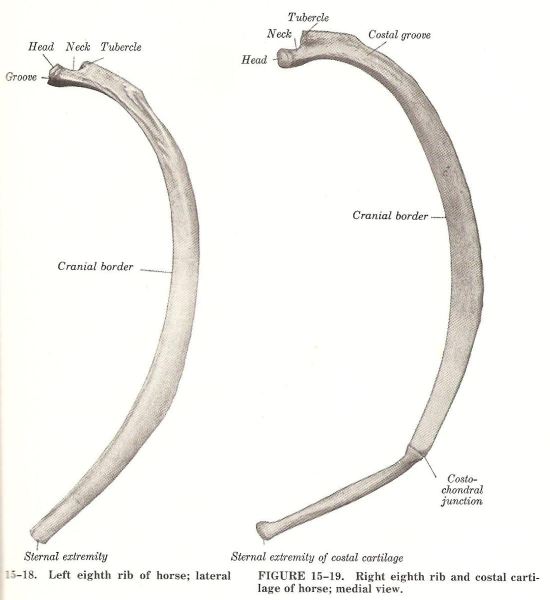
The anatomy of a rib is pretty basic. The body makes up most of it. Up top there is a head and a tubercle which both attach to the spine. At the bottom it connects to a long piece of cartilage at the costochondral junction. Costo has to do with rib. Chondral has to do with cartilage. So the costochondral junction is where the bone of the rib joins the section of cartilage that ultimately connects them all together at the bottom. The cartilages on the first few ribs are much shorter, thicker and heavier, and therefore less flexible, than those on the ribs farther back.
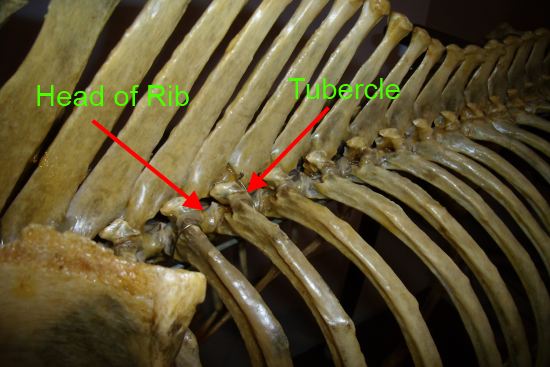
The ribs attach to the spine at two spots. The head of the rib connects where two vertebrae join while the tubercle joins higher up on the vertebra on its transverse process (which is very much smaller than the transverse processes on the lumbar vertebrae.). So even though the connections are movable joints, having two joints that close together makes it is pretty firmly connected up top.
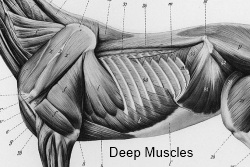 |
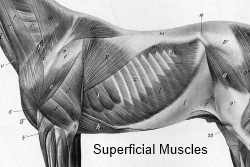 |
It is important to remember that the rib head and tubercle are hidden under inches of muscle. You can't feel the ribs till they come out from underneath all that muscle. Then what you are feeling is a ways down the body of the rib, nowhere near the rib heads themselves. Sometimes people who don't understand anatomy well talk about saddles sitting on the "rib heads". This is an impossibility.
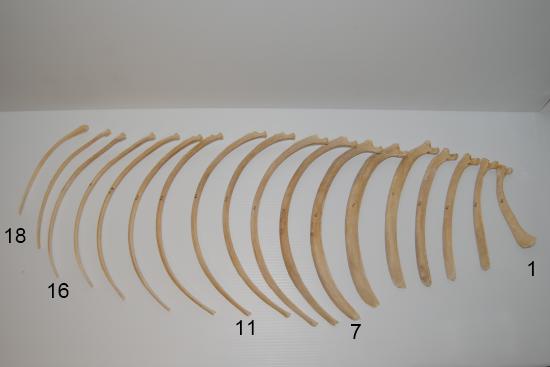
The body of the ribs vary a lot in length, width and the amount of curve depending on where in the rib cage they lie. Length wise, the first is the shortest. Then they get longer to about the tenth or eleventh and from there back they get shorter again till the last rib is about the length of the second. Shape wise, the first rib is pretty straight, but they increase in curve quickly from the second to the seventh, stay that shape to the sixteenth or so, and then the curve decreases on the last couple again. (1)
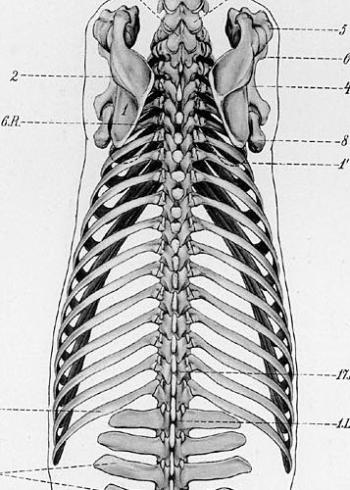
They also change their angle relative to the ground. The first rib actually angles ahead a bit. The second is pretty vertical, and after that they slope backwards more and more. If you cut crosswise through the body of the horse, the end of the last rib is generally at the level of L3.
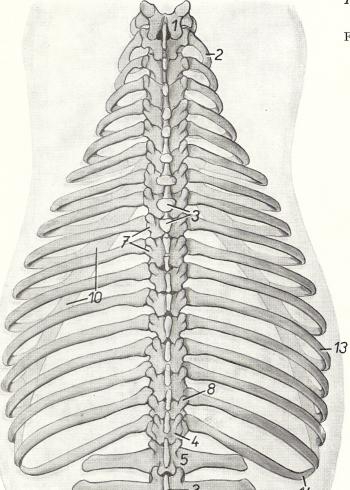
It is the shape of the ribs themselves, how curved they are and how they are set onto the spine, that determines the shape of the rib cage - if they are "well sprung" or "slab sided" or somewhere in between. Professional anatomical drawings such as the two above are usually made from real specimens. Looking at the difference in the shape of the rib cage between these two is a good comparison of the range of shapes we are trying to fit.
Effect of the rib cage shape on saddle fit
Remember that we aren't putting the saddle directly on the ribs. It rests on the muscle that is over the ribs. But the bones act as the foundation for the muscles, so the shape of the rib cage under the muscles affects the specs of the tree. The overall size of the horse - width of the rib cage side to side - is one of the things that determines the spread between the bars. But the angle of the bars is determined by the underlying shape of the rib cage as well as the musculature on top of it. The ribs in the last picture above, where the ribs come out fairly wide before curving down, would need a wider angle on the bars for a good fit. The ribs in the picture above that leave the spine and go down relatively quickly. A narrower angle between the bars would be needed to fit this horse, depending on his muscle volume.
So what happens at the bottom of the ribs?
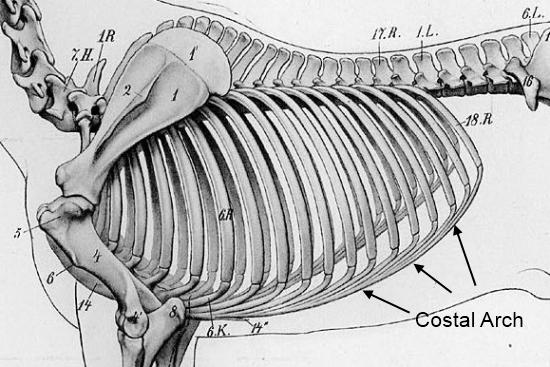
The first eight ribs are attached directly to the sternum by their costal cartilages, so those ribs don't have the range of movement the others do because they are pretty solidly connected both top and bottom. The last nine or ten have their cartilages attached to each other in a curve, the costal arch, which is tightly connected to the cartilage of the eighth rib and therefore to the sternum. In most species there are often one or two ribs at the end that are not connected to the others by cartilage and these are called "floating ribs". While apparently they can occur in horses, it doesn't appear that they are very common.
You can see the costal arch on a gaunted up horse or a horse taking in a really deep breath. It is seen more easily on thinner horses than fatter ones. You can feel it quite easily on most horses, especially at the top, back end.
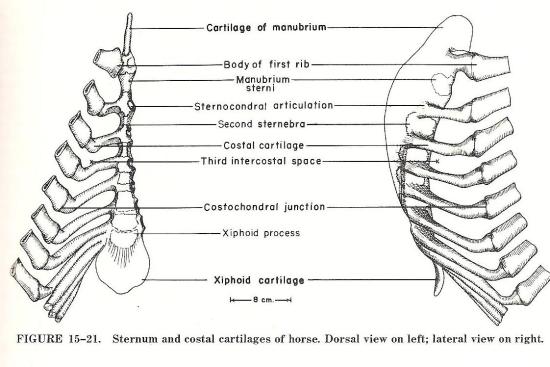
The sternum itself is interesting. We tend to think that the "breastbone" is one bone but really, it is like the spine - a collection of separate bones (seven in number) called sternebrae. They are all connected by cartilage without joints between them, and while some fuse together early in life, some never are totally calcified even in old age. So while the sternum is solid - no joints - it isn't all bone either and lots of pressure, such as from a super tight cinch, can affect it, especially in a young horse. Its shape and how it ties into the ribs is the bony part of what makes up the underline.
How the rib cage shape affects cinch position
The cinch will always go to the area of the horse with the smallest circumference. The underline of the horse and the shape of the side of the rib cage are two components that determine where that smallest circumference lies.
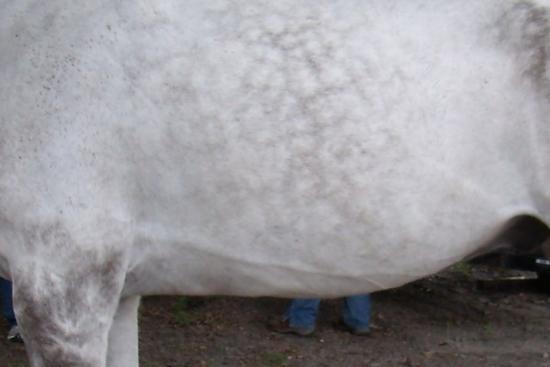
If the underline of the horse is fairly flat, the cinch has has no reason to move and will more likely stay where it starts.
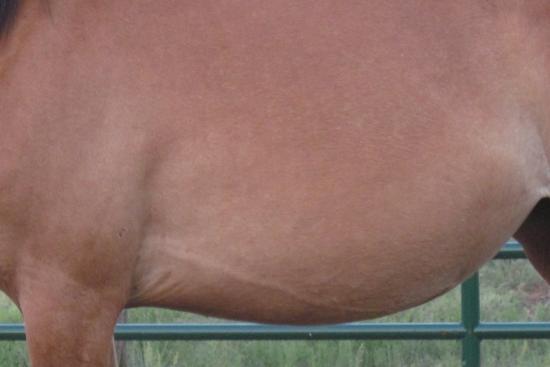
If the underline slopes up towards the front legs, then the cinch will move forward.
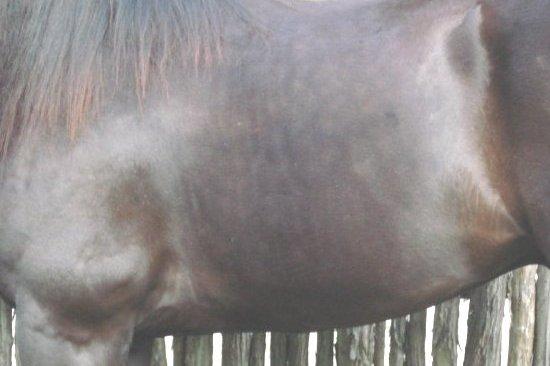
If it slopes up going backwards, the cinch may have a tendency to move back on the horse.
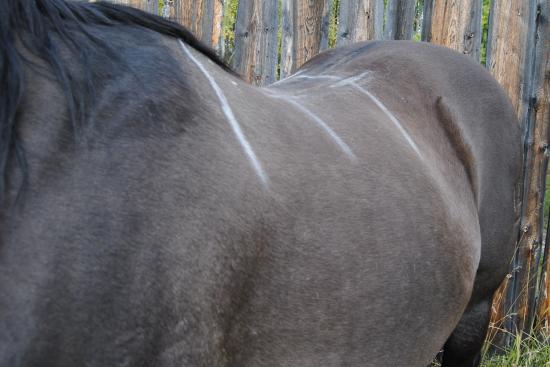
If the horse has a very round barrel, the narrowest place is at the front, so the cinch will tend to move forward. This conformation combined with an underline that slopes up toward the front can end up with the cinch being very close behind the elbow, possibly causing cinch sores, especially if it is in a forward rigging position.
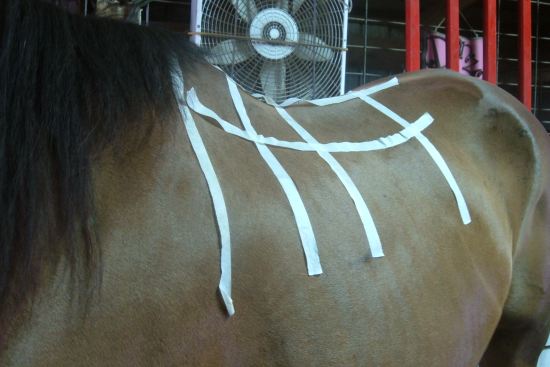
For more flat sided horses, the cinch will not move forward as easily.
However, it is very important to remember that the cinch position does not determine the saddle position! The saddle position is set by the where the shape of the bars matches the shape of the horse's back. It is perfectly OK to ride your horse with the saddle tree in its proper place right behind the shoulder blade, and a cinch that is angled forward. The cinch will not pull the saddle out of place or cause excess pressure on the shoulder blades if the tree fits the horse. In fact, moving the rigging forward so the cinch can hang vertical "in the girth groove" will put more downward pressure on the front of the bars and is more likely to cause interference with shoulder movement because the shoulder blades cannot slip underneath the rounded front bar tips like they can with a saddle that is rigged farther back.
So the shape of the rib cage is really important in how the saddle works on the horse. But it also moves, and we'll discuss that next time.
(1) Much of the anatomical information in this post, as in some previous posts, comes from Sisson and Grossman's The Anatomy of the Domestic Animals Robert Getty editor 5th ed. This is still considered one of the top anatomy texts for teaching veterinarians.
